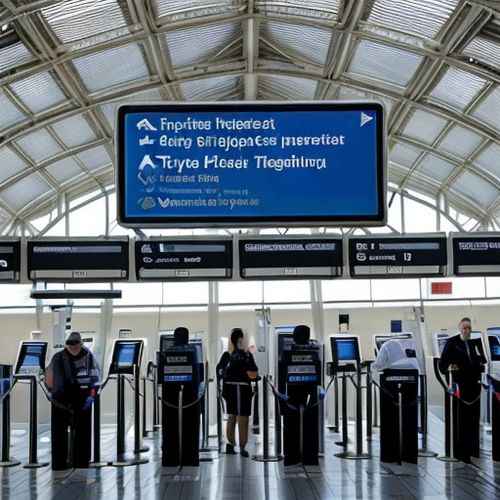High-altitude travel offers breathtaking vistas and unforgettable adventures, but it also comes with the risk of acute mountain sickness (AMS), commonly known as altitude sickness. Proper medication timing can make the difference between an enjoyable journey and a miserable experience. Understanding when and how to take altitude sickness medication is crucial for anyone venturing above 2,500 meters.
The Physiology of Altitude Sickness
As elevation increases, the air becomes thinner, and oxygen levels drop significantly. This sudden change forces the body to work harder to deliver oxygen to tissues and organs. For many travelers, this adjustment period triggers symptoms like headaches, nausea, dizziness, and fatigue - the hallmarks of AMS. In severe cases, it can progress to life-threatening conditions like high-altitude pulmonary edema (HAPE) or high-altitude cerebral edema (HACE). The body typically needs 1-3 days to acclimatize at a given altitude, but medication can help ease this transition when used correctly.
Pre-Travel Preparation Matters
Smart travelers begin preparing for high-altitude medication regimens weeks before departure. Consulting with a physician familiar with wilderness medicine is essential, as some medications require gradual introduction to assess tolerance. Blood tests might be recommended to check for conditions that could complicate high-altitude stays. Travelers with pre-existing respiratory or cardiovascular conditions need particularly careful evaluation. These preparatory steps ensure medications will be both safe and effective when needed most.
Acetazolamide: The Gold Standard
Widely considered the most effective preventive medication, acetazolamide works by speeding up acclimatization. The standard protocol suggests starting this carbonic anhydrase inhibitor 24-48 hours before ascent and continuing for 48 hours after reaching target altitude. Many experienced mountaineers swear by a "loading dose" strategy - taking the first dose 36 hours pre-ascent, then maintaining smaller doses every 12 hours. This approach gives the medication time to alter blood chemistry gradually, minimizing side effects like tingling extremities while maximizing protective benefits.
Dexamethasone for Rapid Ascents
When sudden altitude gains are unavoidable - such as with emergency rescue scenarios or certain flying routes - dexamethasone provides powerful anti-inflammatory protection. Unlike acetazolamide, this steroid doesn't aid acclimatization but rather suppresses symptoms. Experts recommend initiating doses 6-8 hours before rapid ascent, with careful monitoring afterward. Due to potential side effects with prolonged use, dexamethasone should never replace proper acclimatization when time allows. It's particularly valuable for travelers who've previously suffered severe AMS or those making obligatory rapid ascents.
Nifedipine for HAPE Prevention
Travelers with a history of high-altitude pulmonary edema may receive nifedipine prescriptions. This calcium channel blocker helps prevent dangerous fluid buildup in the lungs. Preventive dosing typically begins the day before ascent and continues for several days at altitude. The extended-release formulation has revolutionized HAPE prevention, maintaining steady blood levels with fewer doses. Those using nifedipine should remain vigilant for side effects like lightheadedness, especially when transitioning from sitting to standing positions.
The Critical First 48 Hours
Medication timing becomes most crucial during the initial two days at elevation. This window represents the peak risk period for AMS development. Even with preventive medications, travelers should monitor themselves closely for symptoms during this phase. Many experts recommend setting alarms for nighttime doses, as symptoms often worsen during sleep. Maintaining strict hydration while avoiding alcohol and sedatives significantly enhances medication effectiveness during this vulnerable period.
Children and Altitude Medication
Pediatric dosing requires special consideration, as many altitude medications lack extensive testing in young populations. Most guidelines suggest acetazolamide may be used in children over age 12 following adult protocols, while younger children need weight-adjusted dosing. Dexamethasone use in children remains controversial except in emergency situations. Families traveling to high altitudes with children should seek pediatric-specific advice well before departure.
When to Stop Medication
Discontinuing altitude medications requires as much strategy as starting them. Abrupt cessation of dexamethasone can cause rebound symptoms, necessitating gradual tapering. Acetazolamide can typically be stopped after 2-3 symptom-free days at target altitude, as natural acclimatization will have occurred. Continuing medications beyond necessary periods often leads to diminished returns and increased side effect risks. Travelers making multi-stage ascents may need to restart medications before each significant elevation gain.
Natural Alternatives and Their Timing
While not as potent as pharmaceuticals, some natural supplements show modest altitude benefits. Ginkgo biloba requires at least 5 days of pre-ascent use to potentially improve circulation. Iron supplementation, when started 4-6 weeks before travel, may help those with borderline anemia. Antioxidant-rich diets begun weeks in advance might provide marginal protection. These approaches work best when combined with proper ascent pacing rather than replacing medical interventions for those at high risk.
Special Considerations for Elderly Travelers
Aging bodies face unique challenges at altitude. Medication metabolism slows, requiring possible dose adjustments. Underlying conditions like hypertension or mild heart failure may necessitate altered treatment plans. Many geriatric specialists recommend starting preventive medications earlier (3-4 days pre-ascent) and using lower maintenance doses. Extra recovery days become crucial, as older travelers often experience delayed symptom onset that can be mistaken for simple fatigue.
The Importance of Individualized Plans
Cookie-cutter approaches often fail in altitude medicine. A traveler's previous altitude experience, current fitness level, ascent rate, and destination elevation all influence medication timing. Those flying directly to high-altitude cities like Lhasa or La Paz need different strategies than trekkers making gradual ascents. Smart travelers keep detailed altitude journals noting medication schedules and responses, creating personalized references for future adventures. This data proves invaluable for refining approaches on subsequent trips.
Emerging Research on Timing
Recent studies explore whether taking certain medications at specific times of day enhances effectiveness. Preliminary data suggests evening acetazolamide dosing might better counteract nighttime oxygen desaturation. Other research investigates whether alternating medication types at different altitudes provides superior protection. While not yet reflected in formal guidelines, these findings hint at future personalization possibilities based on circadian rhythms and ascent profiles.
Cultural and Logistical Factors
Medication timing must account for practical realities. Travelers crossing multiple time zones should adjust dosing schedules gradually to new time zones before ascent. Those visiting remote regions need to calculate time differences when consulting with home physicians. Cultural practices like coca tea consumption in the Andes may interact with medications, requiring schedule adjustments. Understanding these variables ensures medications work as intended within the context of real-world travel.
When Medications Aren't Enough
Even perfectly timed medications can't overcome dangerously rapid ascents or individual susceptibility. Recognizing medication failure signs - symptoms worsening despite proper dosing - becomes vital. Immediate descent remains the definitive treatment for severe AMS, HAPE, or HACE. Smart travelers build flexible itineraries that allow for additional acclimatization days or retreat to lower elevations if medications prove insufficient.
The Future of Altitude Medication Timing
Advances in wearable technology may soon revolutionize altitude medication approaches. Continuous oxygen saturation monitors could trigger medication dosing based on real-time physiological data rather than fixed schedules. Genetic testing might identify individuals needing earlier or more aggressive pharmacological intervention. As research progresses, the current "one-size-fits-most" timing guidelines will likely give way to truly personalized altitude medicine protocols.

By William Miller/Apr 11, 2025

By Lily Simpson/Apr 11, 2025

By Thomas Roberts/Apr 11, 2025

By John Smith/Apr 11, 2025

By Thomas Roberts/Apr 11, 2025

By John Smith/Apr 11, 2025

By Rebecca Stewart/Apr 11, 2025

By Sophia Lewis/Apr 11, 2025

By Sophia Lewis/Apr 11, 2025

By Lily Simpson/Apr 11, 2025

By Sophia Lewis/Apr 11, 2025

By William Miller/Apr 11, 2025

By Ryan Martin/Apr 11, 2025

By David Anderson/Apr 11, 2025

By Ryan Martin/Apr 11, 2025

By Laura Wilson/Apr 11, 2025

By Eric Ward/Apr 11, 2025

By Ryan Martin/Apr 11, 2025